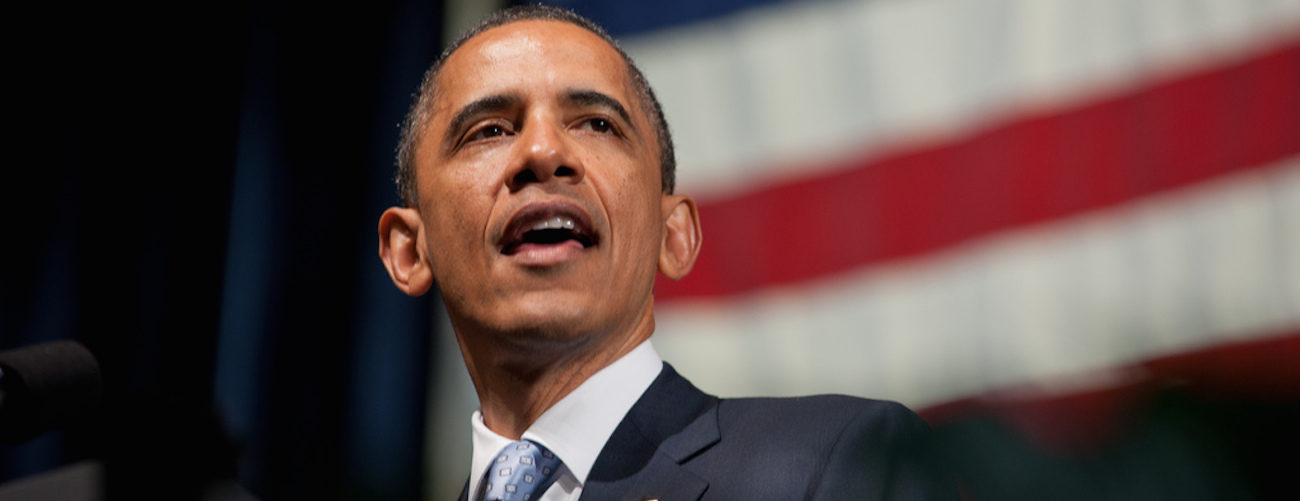Transparency has long been a part of Barack Obama’s political identity. He talked about it on the campaign trail in 2007. He talked about it on his first full day as president. He talked about it in his 2015 State of the Union. He even mentioned it in last week’s farewell address. But many of the reporters who covered the Obama administration know a different reality. And as the 44th President leaves the Oval Office, we owe him a farewell fact-check.
Let’s recap the self-proclaimed “most transparent administration in history.”
These were eight years in which the Obama administration prosecuted more leakers than all previous presidents combined. In the 2013 Committee to Protect Journalists report, The Obama Administration and the Press, former Washington Post executive editor Leonard Downie Jr. wrote, “The administration’s war on leaks and other efforts to control information are the most aggressive I’ve seen since the Nixon administration.” More recently, the organization Reporters Without Borders cited this “war on whistleblowers” to help explain the US’s 41st-out-of-180 rank in its Press Freedom Index. Obama’s last-minute commutation of Chelsea Manning’s prison sentence improves, but does not erase, what RSF described as his administration’s record of “obsessive control of information.”
These were eight years in which the Society of Professional Journalists sent repeated letters to the Obama administration urging more transparency, when the White House Correspondents Association submitted a letter of its own (co-signed by dozens of news orgs) protesting “Journalists…routinely being denied the right to photograph or videotape the President while he is performing his official duties,” and when the CEO of the Associated Press wrote to Obama’s then-Attorney General to object “in the strongest possible terms” to the DOJ’s secret collection of AP phone records.
These were eight years in which the Freedom of Information Act–which the president once called “perhaps the most powerful instrument we have for making our government honest and transparent”–was diagnosed as “broken” by the House Oversight Committee. And, thanks to a FOIA lawsuit by the Freedom of the Press Foundation, we know that Obama’s Department of Justice lobbied against the reform package (which Obama ultimately signed) to improve the law.
These were eight years in which the Wall Street Journal, New York Times, Charleston Post & Courier, Des Moines Register, and the San Diego Union-Tribune published editorials on Obama non-transparency; when one Slate writer said the President had “failed miserably” to deliver transparency, and former New York Times executive editor Jill Abramson called the Obama White House “the most secretive White House I have ever dealt with.” Even a former Obama colleague, supporter, and advisor wrote to the Times in 2011 to voice his concerns about on the administration’s approach to this “fundamental issue of American democracy.”
Now, in all fairness, PolitiFact’s “Obameter” notes that the president followed through on 40 percent of his transparency promises and achieved compromises on many others. And anyone interested in the fuller picture ought read in-depth analyses from the Sunlight Foundation’s Alex Howard, or poli sci professor Jason Ross Arnold, or Obama’s final press secretary Josh Earnest. And, since the bar of expectations is extremely low as we enter a presidency that is likely to be–to quote Washington Post columnist Margaret Sullivan–a “A Hellscape of Lies and Distorted Reality,” Obama gets points for at least preaching the gospel of transparency.
But no matter how dark things get in the next four years, we ought not romanticize the last eight. The unfortunate truth is that Obama was never as good at transparency as he promised or claimed to be. If you’re feeling nostalgic in the coming months, read James Risen’s scathing op-ed from December arguing “If Donald J. Trump decides as president to throw a whistle-blower in jail for trying to talk to a reporter, or gets the FBI to spy on a journalist, he will have one man to thank for bequeathing him such expansive power: Barack Obama.”
During my own years-long (and ongoing) battle for access to information from a major prescription drug-dealing trial, I never quite reconciled the two Obamas I encountered: the decent, good-humored, honest, eloquent, former Constitutional law professor I saw delivering speeches on TV, and the man at the helm of administration that fought tirelessly against a request for previously published trial evidence. Part of me wanted to believe that, if the President knew what was going on with my FOIA request and others–the incompetence, the egregious delays, the insane fees–he wouldn’t stand for it. The facts said otherwise.
Today, I am no longer confused; I believe the tension between his words and deeds is Obama’s legacy. As he leaves office, simultaneously preaching openness and bequeathing unresolved FOIA lawsuits like mine to Donald Trump, Obama reminds us that talking about transparency is not the same as actual transparency. Presenting yourself as friend of the press doesn’t make you one.
In a sense, the widely-distributed photos by photojournalist-turned-Official White House Photographer Pete Souza are the perfect mementos from the last eight years. Yes, they are often beautiful, moving, and strikingly composed. But they are also, in the words of that WHCA complaint from 2013, “visual press releases.” At the time, Poynter faculty member Kenny Irby argued that Souza “operates more…as a propagandist than as a journalist. His role is to make the president look good.”
It’s our role to report–and remember–the facts.
Philip Eil is a freelance journalist based in Providence, Rhode Island. He sued the Drug Enforcement Administration under the FOIA, with help from the Rhode Island ACLU and two pro-bono attorneys, Neal McNamara and Jessica Jewell. Follow him on Twitter: @phileil.

